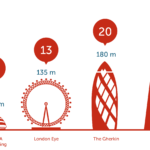
Planning Poker in Agile brings together multiple expert opinions for the agile estimation of a project. In this type of agile planning, we include everyone from programmers, testers and database engineers to analysts, user interaction designers and more. Because these team members represent all disciplines on a software project, they’re better suited to the estimation task than anyone else.
How Does Planning Poker Work?
At the start of this agile planning exercise, each estimator is given a deck of Planning Poker cards. A typical deck has cards showing the Fibonacci sequence 1, 2, 3, 5, 8, 13, 21, 34, 55, 89; However, Majority of cards are now using the modified numbers: 0, 1/2, 1, 2, 3, 5, 8, 13, 20, 40, 100 and infinity. The reason for using the Fibonacci sequence is to reflect the uncertainty in estimating larger items. A high estimate usually means that the story is not well understood in detail or should be broken down into multiple smaller stories. Smaller stories can be estimated in greater detail. It would be a waste of time to discuss if it is 20 or above. The story is simply too big.
For each user story or theme to be estimated, a moderator (usually the product owner or an analyst) reads the description. There will be some discussion, where the product owner answers any questions the estimators have. But the goal of Planning Poker in Scrum is not to derive an estimate that will withstand all future scrutiny. Instead, we want a valuable estimate that can be arrived at inexpensively.
After discussion, each estimator privately selects a Planning Poker card representing his or her agile estimation. Once each estimator has made a selection, cards are simultaneously turned over and shown so that all participants can see one another’s estimate.
Estimates will likely differ significantly. And that’s OK. The highest and lowest estimators explain their perspective so that the team can know where they’re coming from. The moderator takes notes during this agile planning session that will be helpful when the story is programmed and tested.
After discussion, each estimator re-estimates by selecting a card. Often, the estimates will converge by the second round. If not, repeat the process until the team agrees on a single estimate to use for the story or these. It rarely takes more than three rounds in agile estimation to reach the goal.
Tips for Planning Poker in Scrum
Here’s some tips for common challenges in Planning Poker:
- Keep discussions productive: Consider purchasing a two-minute sand timer, and allowing anyone in the meeting to start it at any time. When the sand runs out, the next round of Planning Poker cards is played. This helps teams learn to estimate more rapidly within agile planning.
- Break out into smaller sessions: It is possible to play Planning Poker with a subset of the team. It’s not ideal, but a good option if there are many stories to be estimated, as can often happen at the start of a new project.
- Choose the right time to play: Estimating teams will need to play Planning Poker at two different occasions. The first time, teams will usually estimate a large number of items before the project kicks off or during first iterations. The second time, teams need to put forth ongoing effort to estimate new stories identified during an iteration.
What do you think?
Do you use Poker Planning in your organization? Do you use Fibonacci numbers or the modified one? or you use hours instead of story points? I would like to hear from you so please share your thoughts in the comments below.



